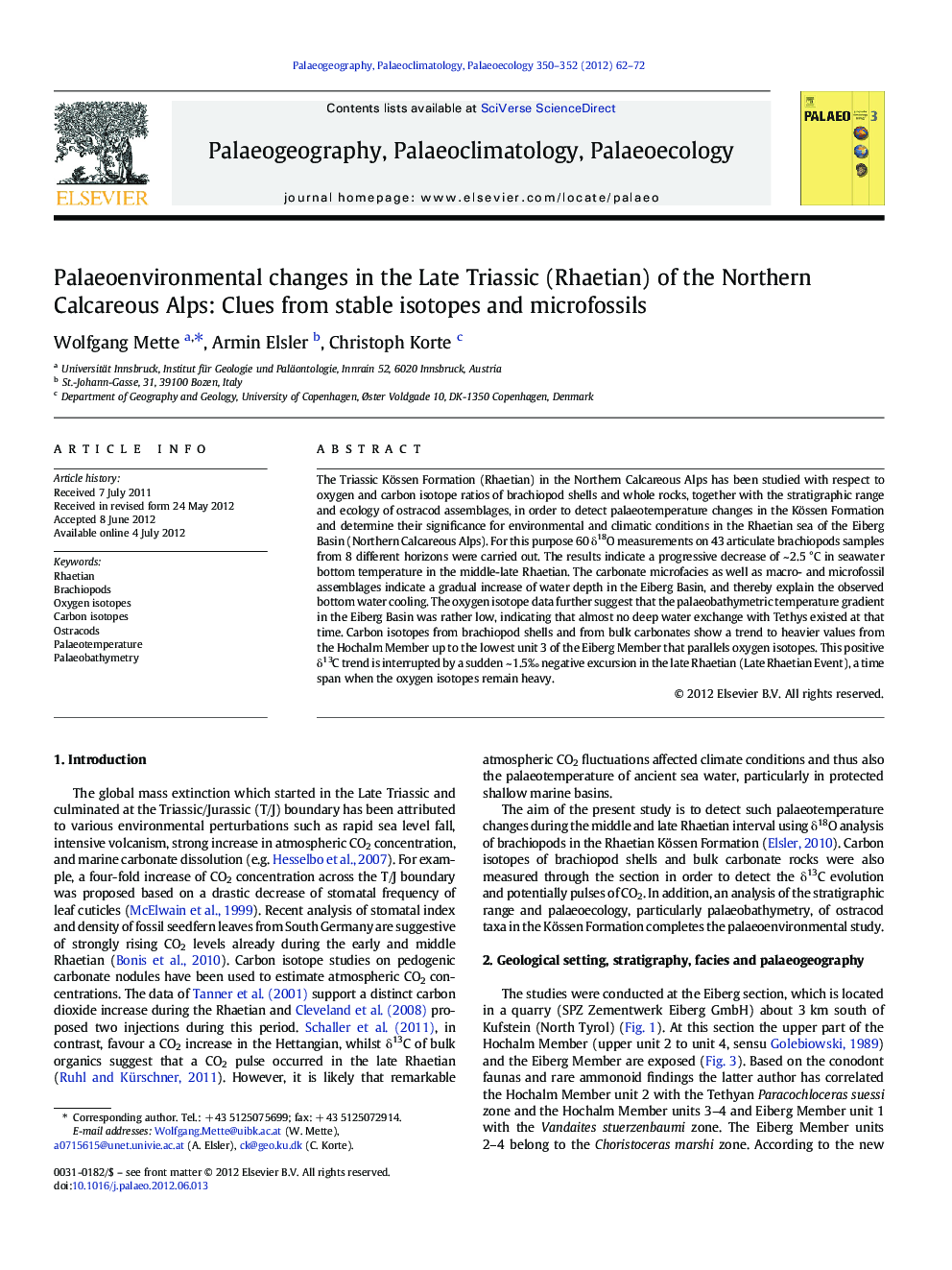| کد مقاله | کد نشریه | سال انتشار | مقاله انگلیسی | نسخه تمام متن |
|---|---|---|---|---|
| 4466819 | 1622225 | 2012 | 11 صفحه PDF | دانلود رایگان |

The Triassic Kössen Formation (Rhaetian) in the Northern Calcareous Alps has been studied with respect to oxygen and carbon isotope ratios of brachiopod shells and whole rocks, together with the stratigraphic range and ecology of ostracod assemblages, in order to detect palaeotemperature changes in the Kössen Formation and determine their significance for environmental and climatic conditions in the Rhaetian sea of the Eiberg Basin (Northern Calcareous Alps). For this purpose 60 δ18O measurements on 43 articulate brachiopods samples from 8 different horizons were carried out. The results indicate a progressive decrease of ~ 2.5 °C in seawater bottom temperature in the middle-late Rhaetian. The carbonate microfacies as well as macro- and microfossil assemblages indicate a gradual increase of water depth in the Eiberg Basin, and thereby explain the observed bottom water cooling. The oxygen isotope data further suggest that the palaeobathymetric temperature gradient in the Eiberg Basin was rather low, indicating that almost no deep water exchange with Tethys existed at that time. Carbon isotopes from brachiopod shells and from bulk carbonates show a trend to heavier values from the Hochalm Member up to the lowest unit 3 of the Eiberg Member that parallels oxygen isotopes. This positive δ13C trend is interrupted by a sudden ~ 1.5‰ negative excursion in the late Rhaetian (Late Rhaetian Event), a time span when the oxygen isotopes remain heavy.
► We study ostracods and δ18O and δ13C in the Rhaetian of the northern Calcareous Alps.
► We find a positive shift of ≥ 0.5‰ δ18O indicating bottom water cooling of ± 2.5 °C.
► The δ18O shift indicates a very low temperature gradient in the Eiberg Basin.
► The δ13C curve shows a negative excursion of ± 1.5‰ in the Upper Rhaetian.
► The δ13C negative excursion suggests a significant global carbon cycle disturbance.
Journal: Palaeogeography, Palaeoclimatology, Palaeoecology - Volumes 350–352, 15 September 2012, Pages 62–72